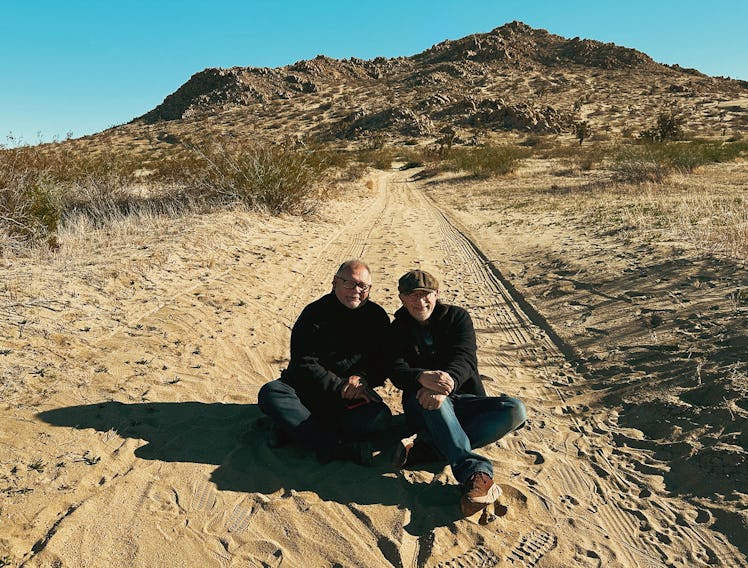Courtesy of Steven Spielberg.
Courtesy of Steven Spielberg.
Courtesy of Emma Molz.
Courtesy of Steven Spielberg.
Courtesy of Miguel Benavides.
Steven Spielberg and Janusz Kaminski
Director and Photographer, Director of Photography, “A Fabelmans Redux” (page 92)
Is there a film from history you wish you could have worked on?
Steven Spielberg: Lawrence of Arabia, because it was—and still is—a great human epic, and I’d have loved to overhear David Lean directing Peter O’Toole.
What was your first film industry job?
Janusz Kaminski: In 1986 I was a second camera assistant on a low-budget film called Sex, Drugs and Rock ’n’ Roll. I learned that I was not good at that job. I also learned that making movies is the best adventure in life.
Who do you consider the most original filmmaker in history?
SS: For me, it will always be Stanley Kubrick. Why? Just look at his films!
What was an early source of inspiration for you?
JK: Two Men in Town [Deux Hommes Dans la Vie], a 1973 French film directed by José Giovanni and starring Jean Gabin and Alain Delon. I was devastated by the film and how it depicted the manipulative aspect of humanity.
Courtesy of Lenne Chai.
Courtesy of Lenne Chai.
Courtesy of Lenne Chai.
Courtesy of Lenne Chai.
Courtesy of Lenne Chai.
Daniels
Directors, “Coolidge vs. Haute Squad 5: Attack on Neo Runway City—Jennifer Reborn” (page 134)
Who do you consider the most original filmmaker in history?
Daniel Kwan: It’s hard to beat Georges Méliès for ingenuity in visual trickery and special effects. He pioneered so many of the techniques we still use today: match cuts, time-lapse photography, overlays, and multiple exposures. If you watch any modern filmmaking, from Michel Gondry to TikTok videos, you’ll see Méliès’s DNA in all of it.
Is there a film from history you wish you could have worked on?
Daniel Scheinert: My brother and his friends made a public-access sketch comedy show called Future Presidents of the United States, and I was so jealous, I got into filmmaking.
What was an early source of inspiration for you?
DK: As a kid, I played a lot of video games like Kirby Super Star and Mega Man X. I would spend hours drawing these characters and building worlds around them. I realize now that they’re both characters that have the ability to steal superpowers from other sources, which is a through line in both Swiss Army Man and Everything Everywhere All at Once.
DS: Weird Al in concert.
Todd Field
Director, “What’s Underneath” (page 114)
What was your first job in the film industry?
I ran six machines as a projectionist at a second-run movie theater. Some of the films played for months, and I studied them through repeat viewing. Wonderfully varied films like Martin Scorsese’s Raging Bull, Steven Spielberg’s Raiders of the Lost Ark, Nicolas Roeg’s Bad Timing: A Sensual Obsession, Robert Redford’s Ordinary People, Lawrence Kasdan’s Body Heat, Barry Levinson’s Diner, Ken Russell’s Altered States, and David Cronenberg’s Scanners.
Is there a film from history you wish you could have worked on?
There are many. Too many. But today I’ll say Mikhail Kalatozov’s Soy Cuba [I Am Cuba]. It was the most incredible piece of film poetry, and virtually impossible technically when it was released back in 1964. Alfonso Cuarón turned me on to this film, and all of us owe a debt of thanks to Martin Scorsese and Francis Ford Coppola for their efforts in restoring what was once a lost and forgotten masterpiece.
This article was originally published on
